

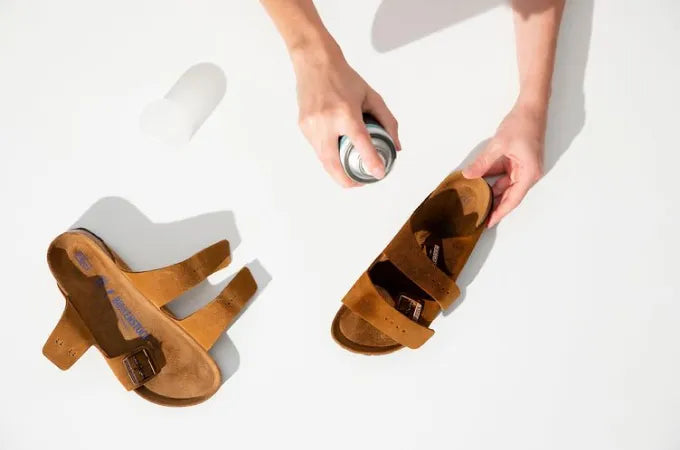
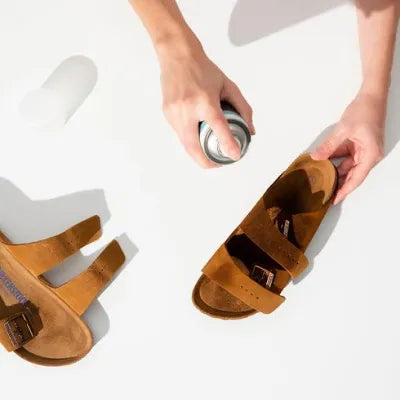
NUBUCK LEATHER/SUEDE
Spray the upper leather of your sandals regularly with a colourless waterproofing spray (use sparingly and observe application instructions). Only spray the outside and cover the footbed with paper for protection.
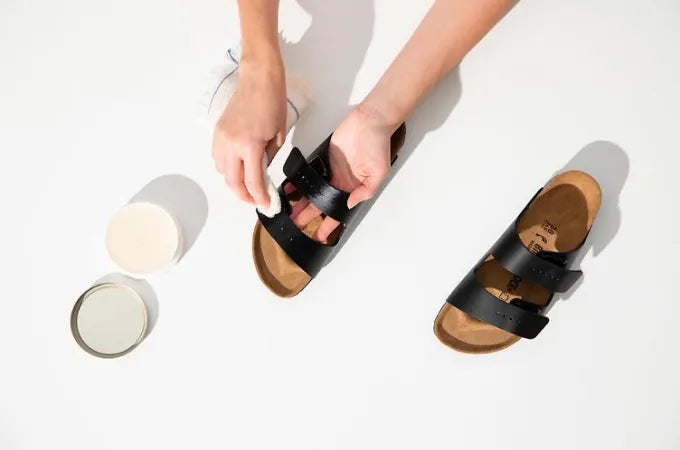
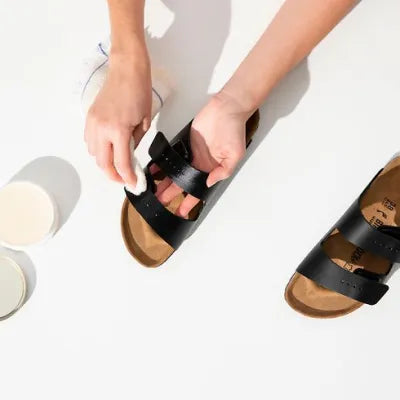
NATURAL LEATHER
Grease the upper leather of your sandals regularly with some leather grease. Only grease the outside and cover the footbed with paper for protection.
CORK & FOOTBED CARE
CORK-CARE
Cork-Care should be applied to prevent your Birkenstock Footbeds from drying out. When the cork no longer looks shiny, apply a thin coat of Cork-Care. Do not be alarmed by cracks which appear where the foot bends. This is an indication that the shoe is adapting to your walking pattern. These cracks are superficial and can be repaired.
Please inspect your cork footbeds regularly. If cracks appear apply cork sealant as described above. If small pieces of cork start to chip out take your shoes to a Birkenstock workshop as this should be repaired immediately. If the cork breaks down too far the only option is to replace the entire footbed including the EVA sole unit. This is called recycling.
WATER EXPOSURE
Do not immerse in water
Our shoes should not be immersed in water as the glues and sealants can dissolve and the leather can become hard and brittle. If the buckles are exposed to salt water, carefully rinse them to avoid corrosion. If Birkenstocks become wet, allow them to dry slowly, away from direct heat. Our EVA collection is the only range that has been designed for use in and around water.
HEAT WARNING
Both the cork and the soles of your Birkenstocks can be damaged by exposure to concentrated heat. Do not leave your shoes in closed cars on warm days and keep them away from radiators and fireplaces. If your shoes become wet, allow them to dry slowly, away from direct heat.
AIRING
The footbed is constructed of layers of jute and cork covered in a suede lining. The footbed is designed to absorb moisture from your feet. It is recommended to air your footbeds regularly to prevent a build up of odours which occur from excess moisture.
REMOVABLE FOOTBEDS
Many designs come with a removable footbed. If you wear these every day of the week, the footbeds will retain a lot of moisture. It is recommended to remove the footbeds regularly for airing. Replacement footbeds are available from your Birkenstock retailer giving you the option to alternate between pairs. Whenever you bring your shoes for repair please remember to leave the footbed in your shoes as this will aid in the speed and accuracy of the repair.
HOW DO I CLEAN MY BIRKENSTOCK SANDALS?
WHAT YOU NEED:
Brush, old tooth brush, cloth, leather shampoo, two bowls of water.
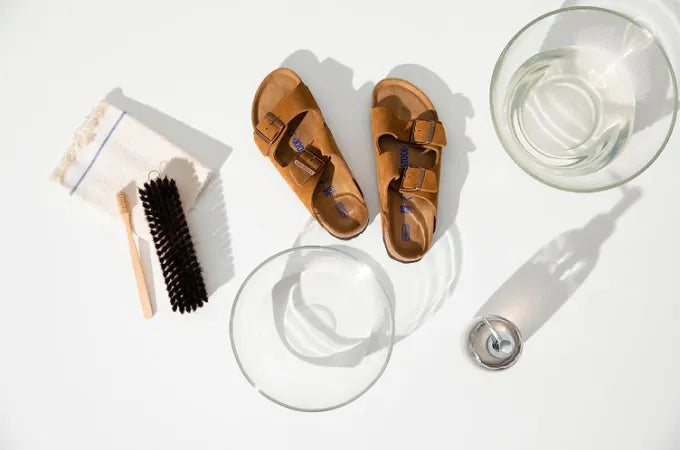
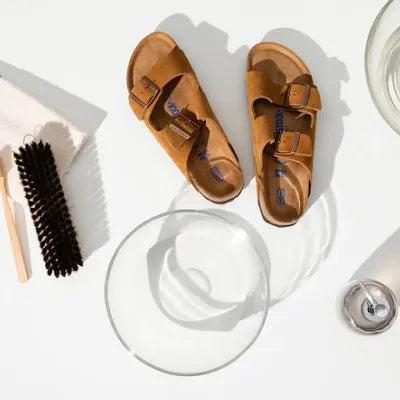
NUBUCK LEATHER/SUEDE
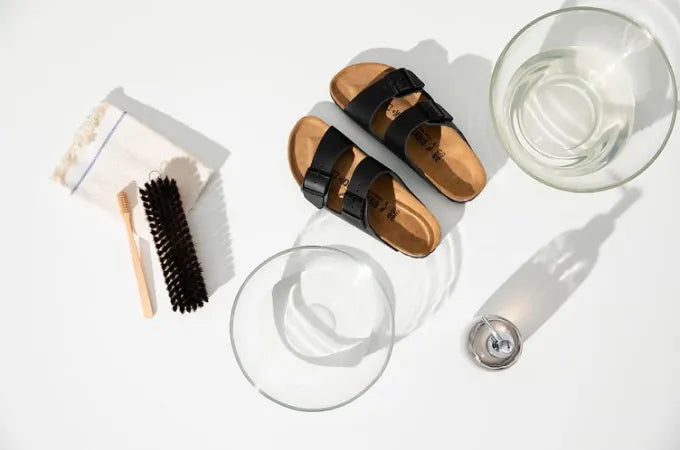
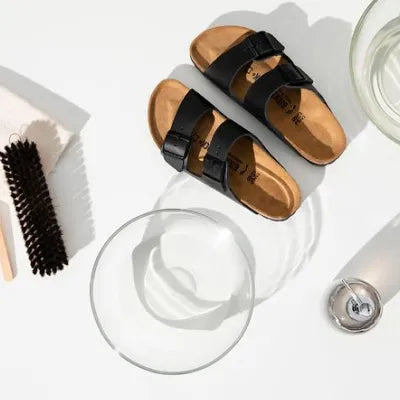
NATURAL/SMOOTH LEATHER
1. REMOVE COARSE DIRT
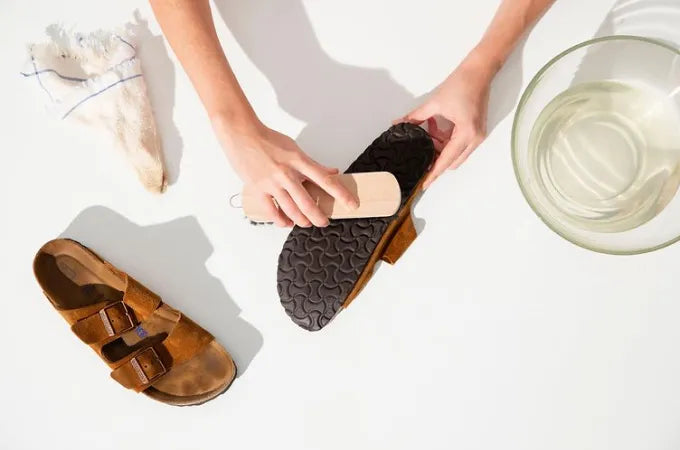
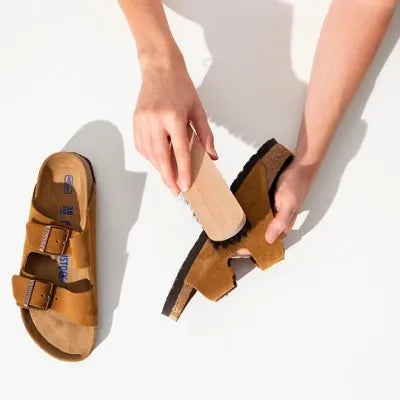
NUBUCK LEATHER/SUEDE
You can remove dried coarse dust and dirt with a brush.
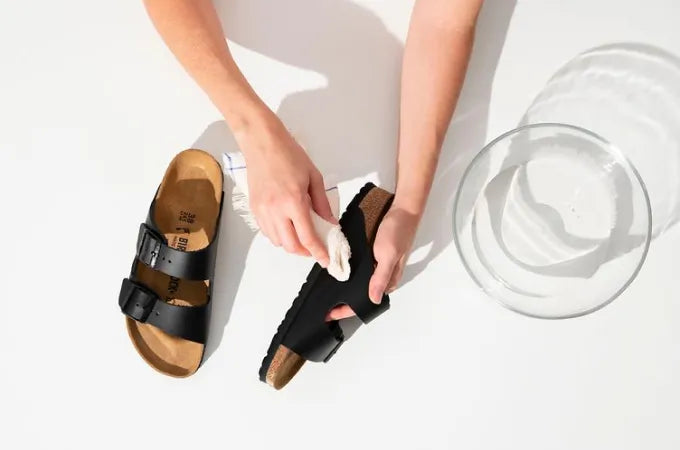
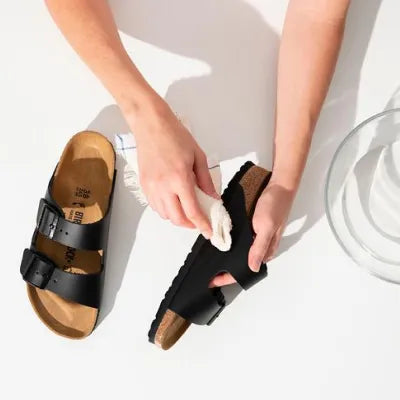
NATURAL/SMOOTH LEATHER
You can remove dust and dirt with a lint-free, slightly damp cloth.
2. CLEAN WITH DAMP BRUSH
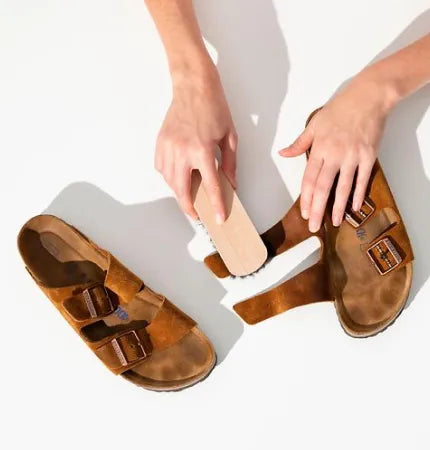
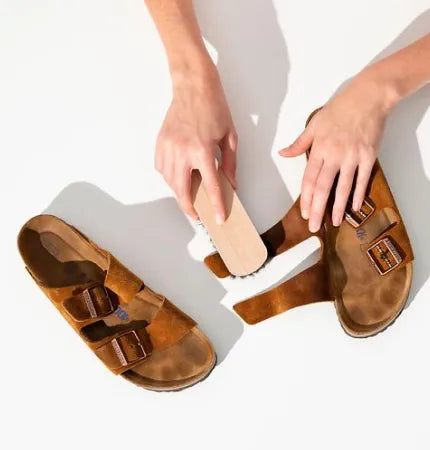
Step 1: open the straps. Clean the inside with a damp brush.
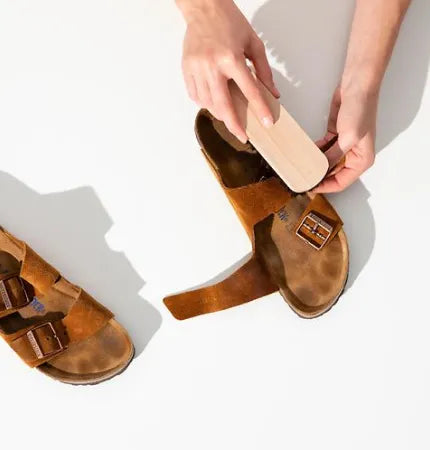
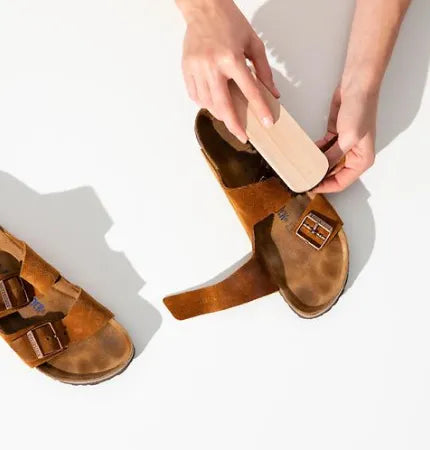
Step 2: clean the outside of the straps with a damp brush.
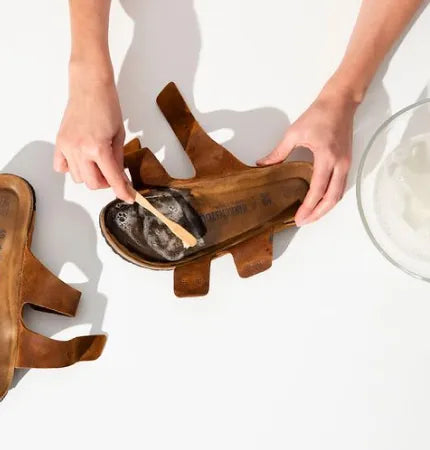
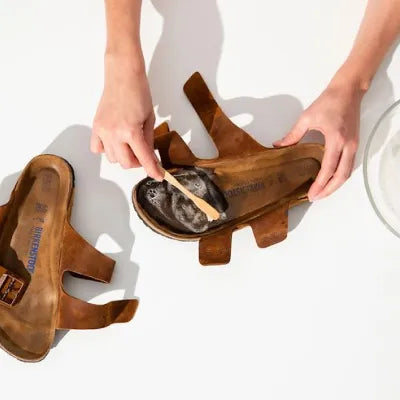
Step 3: the footbed can now be lathered in circular movements with a little water and some leather shampoo. Using an old tooth brush is the best way to massage in the shampoo.
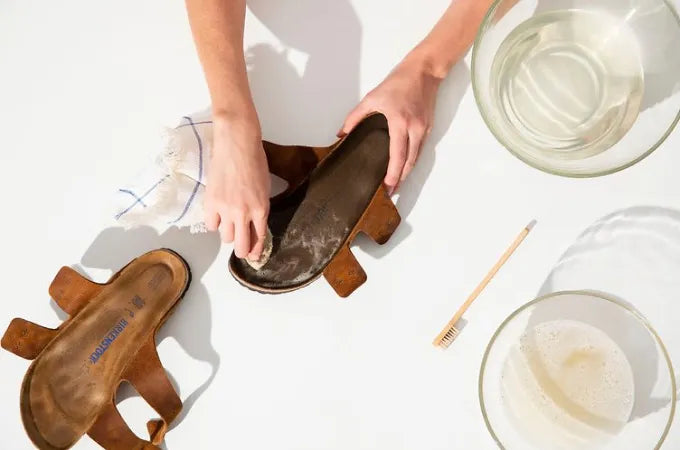
3. REMOVE THE LATHER
Use a wet cloth and wash the sandals off with lukewarm water. Do not hold the sandals under running water and ensure that they do not become completely wet.
DO NOT IMMERSE IN WATER: Your shoes should not be immersed in water as the leather will become hard and brittle. The glues and sealants will dissolve in water. Salt water is corrosive so you should rinse the buckles whenever they have been exposed to salt water. The buckles and rivets can be replaced. Sandals and clogs come with a protective sealant called Cork-Care. This sealant is water soluble and will wear off in time.
3. REMOVE THE LATHER
Use a wet cloth and wash the sandals off with lukewarm water. Do not hold the sandals under running water and ensure that they do not become completely wet.
DO NOT IMMERSE IN WATER: Your shoes should not be immersed in water as the leather will become hard and brittle. The glues and sealants will dissolve in water. Salt water is corrosive so you should rinse the buckles whenever they have been exposed to salt water. The buckles and rivets can be replaced. Sandals and clogs come with a protective sealant called Cork-Care. This sealant is water soluble and will wear off in time.
4. CLEAN THE SOLE
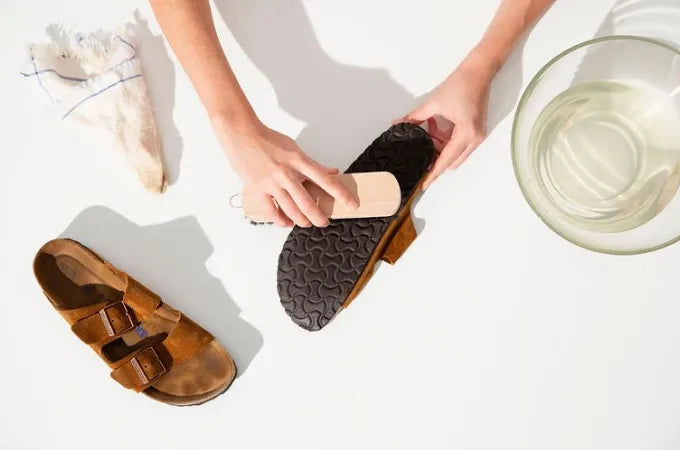
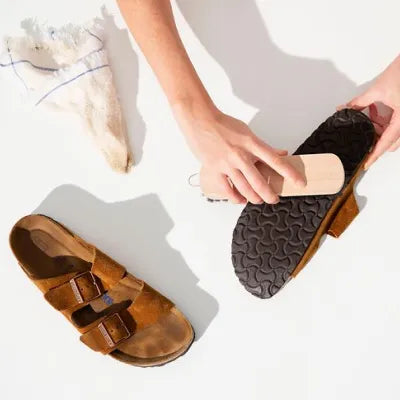
Step 1: if necessary, you can clean the sole with a damp brush.
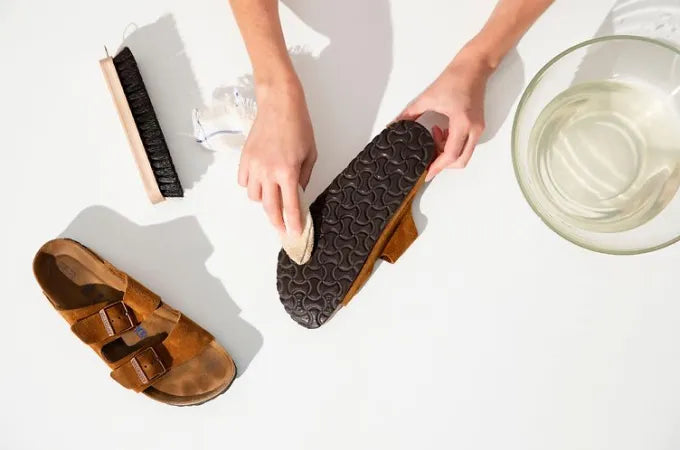
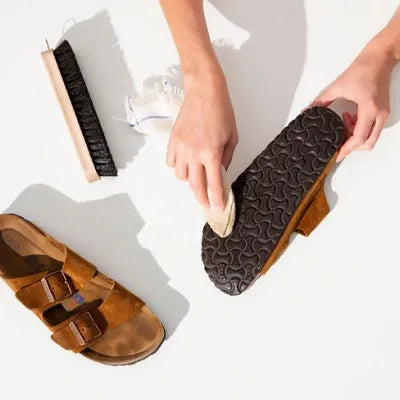
Step 2: subsequently, clean the sole with a damp cloth.
5. LET DRY COMPLETELY
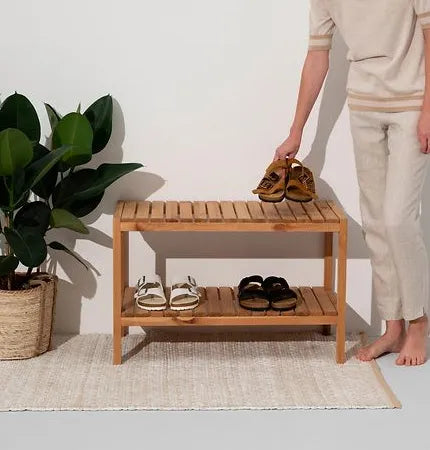
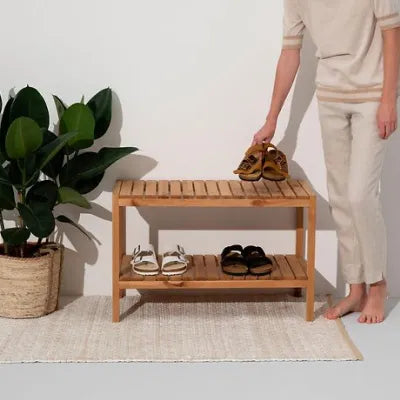
Step 1: let the sandals dry at room temperature in order to retain their moisture-absorbing qualities. Do not let the sandals dry in the sun or on a radiator.
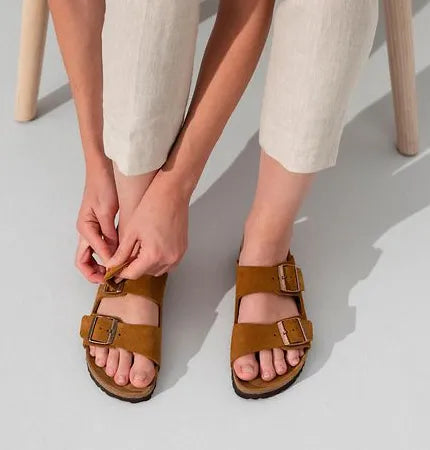
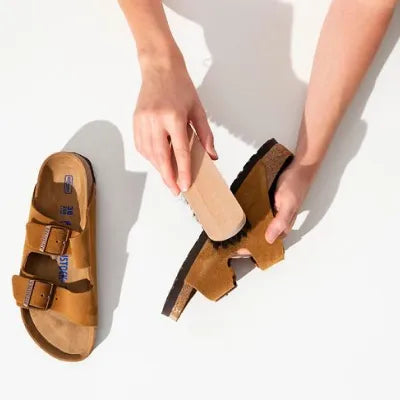
Step 2: the sandals should be dried completely after 24 hours. You can then brush the footbed with a leather brush and close the straps.
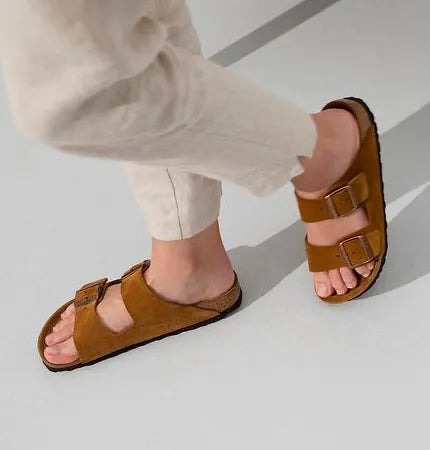
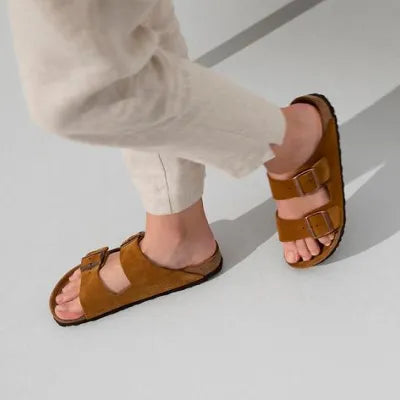
Step 3: you can now wear your sandals again.